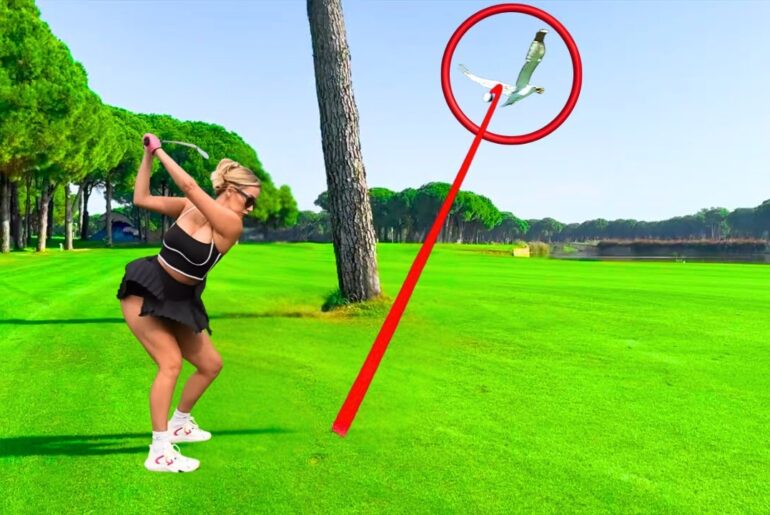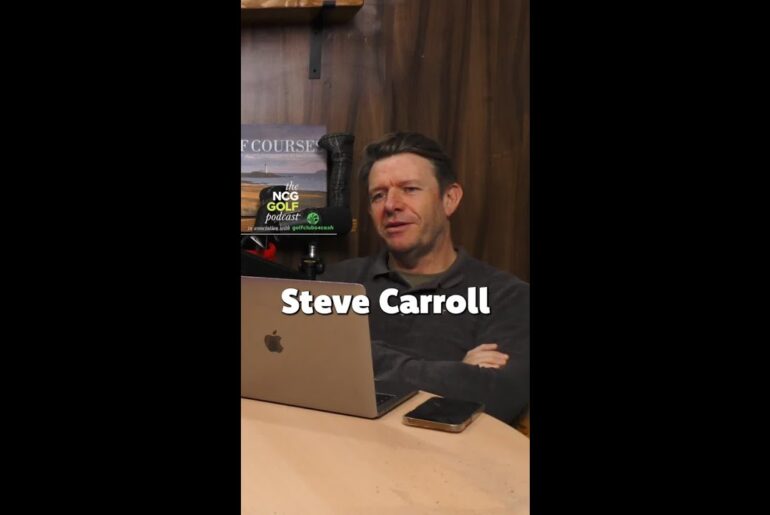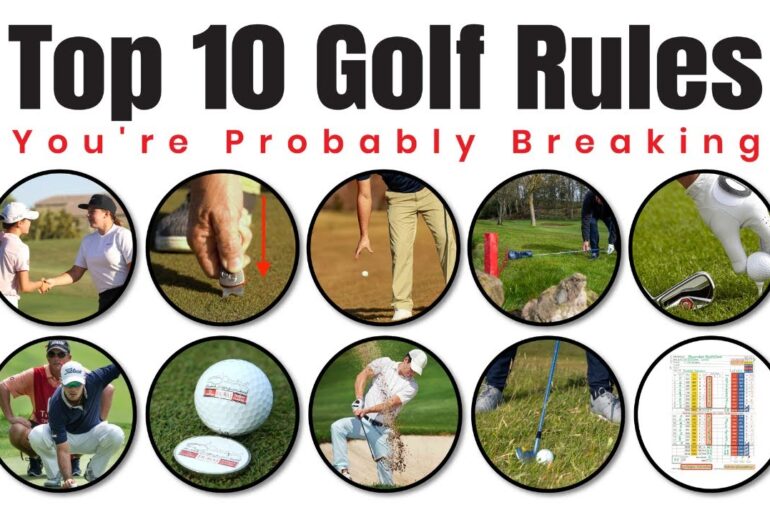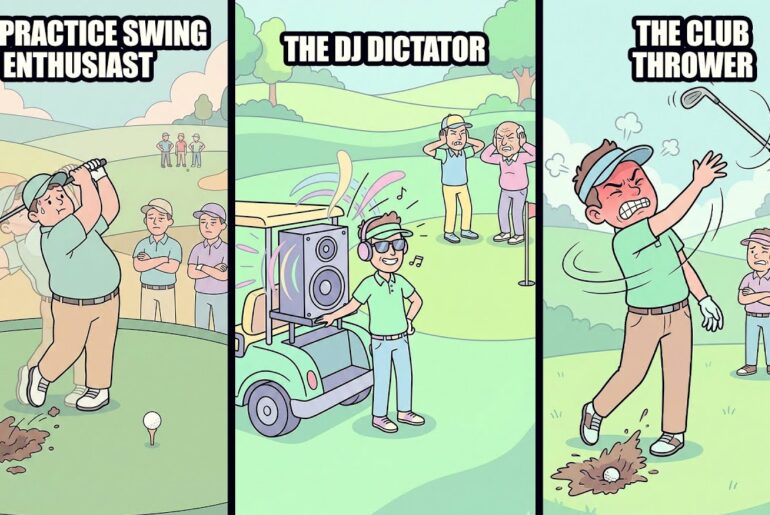Golf has more rules than most beginners realize — and some of them are surprising. Breaking them can lead to penalties, confusion, and frustration on the course.
👉 If you’ve ever felt unsure about golf’s rules, this guide will make everything clear.
In this video, we break down the Top 8 Golf Rules That Shock Beginners. You’ll learn the essentials every new golfer should know so you can avoid penalties, play with confidence, and enjoy the game without second-guessing yourself.
📌 Explore our solution-focused playlists:
✅ Subscribe for more golf tips and swing fixes: https://www.youtube.com/@TheSwingFix?sub_confirmation=1
#GolfRules #BeginnerGolf #LearnGolf
Let’s be real. Unless you’re reading the rule book for fun, chances are you’ve broken at least one golf rule. And no, we’re not talking about throwing your club or dropping a few choice words after a bad slice. We mean real official. That’s a two-stroke penalty kind of rules. You might think you’re playing clean, but golf’s rule book is packed with stuff that can sneak up on you. Little things like touching the sand or hitting out of turn can actually cost you strokes without you realizing it. Golf seems simple. Hit the ball, walk after it, and repeat. But once you look under the hood, it’s full of rules that most casual players never bother to check. And honestly, some of them can come back to bite you even during a friendly round. These aren’t just tournament rules. They matter whether you’re playing with buddies or in a weekend event. One moment you’re just playing fast, the next someone’s pointing out a penalty. So, let’s break down a few of the most common ones that catch people off guard. Starting with something that happens more often than you’d think. Dealing with sand traps. Bunker rule. This one catches a lot of players. If your ball lands in a bunker, you’re not allowed to ground your club in the sand before making your stroke. That means no practice swings that touch the sand, nor resting the club, not even a tap. Why? Because touching the sand could give you feedback about its condition. Soft, firm, wet, etc. That alone is considered gaining an unfair advantage. You can walk in and take your stance. You can lean on your club elsewhere, but once you’re near the ball, keep that club floating. And if you do touch the sand, that’s a two-stroke penalty in stroke play or loss of hole in match play. It’s one of those rules that feels overly strict, but it’s a basic part of how bunkers are treated differently from the rest of the course. So, float that club head. You’ll thank yourself later. playing out a turn. You know that thing where your friend rushes to hit their shot because they’re ready? Yeah. In match play, that can be a real problem. In stroke play, ready golf is totally fine. It’s encouraged to keep moving. But in match play, playing out of turn without permission gives your opponent the option to make you replay the shot as per USGA rule 6.42. So if you hit a great dive when it wasn’t your turn, they can say, “Cool shot. Now do it again.” And the worst part, you might not even realize you broke a rule until someone calls you out on it. The general rule, the player furthest from the hole goes first. Unless your opponent waves you on, stick to that rule. Especially in anything competitive, because it’s not just etiquette, it’s the rule. Dropping from knee height. Remember when players used to drop the ball from shoulder height? Yeah. Not anymore. Since 2019, the rule changed and now you’ve got to drop from knee height, not waist, not shin, knee. Why? It’s about consistency. Dropping from higher up made the ball bounce unpredictably, and that led to more redrops. So, the USGA rule 14.3b2 now says, “Stand straight, hold the ball at knee height, and let it go.” Here’s the thing. If you drop it from the wrong height, it’s not a valid drop. And if you play it without correcting it, that’s a one stroke penalty. Doesn’t matter if the ball landed in the right spot or not. The drop itself has to be right. Also, the ball must fall straight down and land in the relief area without touching you or your equipment. You can’t toss it forward, spin it, or accidentally direct it away from trouble. Sounds picky, but it can save you strokes. You can fix that now. There was a time when spike marks, pitch marks, or damage on the green were just part of the game. You had to put through them, but not anymore. Since 2019, you’re allowed to repair almost any damage on the green, including spike marks, animal scrapes, or indentations caused by a club or ball. USGA rule 13.1C2 spells it out clearly. You can tap down or fix surface issues as long as it’s not normal wear like grass discoloration. And no, you can’t go landscaping. Don’t smooth out entire slopes or redesign the brake. Just fix what’s obviously damage. This rule is a lifesaver when you’re putting for birdie and someone ahead left a heel mark right in your line. You’re no longer at the mercy of careless footwork. Quick tip, always carry a divot, too. You’ll use it more often than you think. When your ball moves and it’s not your fault, imagine this. You’re about to putt and a gust of wind moves your ball a few inches. Do you play it from where it landed, put it back, panic? The answer depends on why it moved. If natural forces like wind or gravity move the ball after you already marked and replaced it, you have to put it back. But if it moved before you lifted and replaced it, you play it from the new spot. USGA rule 13.1D covers this in detail. And bugs. If a bug knocks your ball while crawling on it or a leaf hits it mid- putt, you’re generally not penalized, but you usually have to repay the shot. Knowing this saves you from arguments and confusion, so next time the wind sneaks in or a curious ant joins your game, you’ll know exactly what to do, and it won’t be guessing what just applied. Asking for advice equals penalty. Here’s one many casual golfers mess up without even thinking, asking for or offering advice during a round. Under rule 10.2A, you can talk about general stuff like pin placement, distance, or weather. But the moment you ask what club to use or how to play a shot, that’s considered advice. And if you offer that kind of tip to a fellow player mid round, that’s a two-stroke penalty in stroke play. There are exceptions, of course. You can talk strategy with your caddy or someone on your team during team events, but during most stroke or match play rounds, you’re expected to figure it out solo. So, next time your buddy asks, “Think I should hit a seven or eight here?” Maybe just smile and let him guess. It’s not being rude. It’s keeping things fair. Cleaning your ball not always allowed. Wiping off your ball sounds harmless, right? But depending on when and where you do it, it could cost you strokes. According to rule 14.1C, you’re allowed to clean your ball when you mark and lift it on the green or when the rules specifically allow lifting, like for checking damage or identifying it. But if you pick it up randomly, say in the rough or fairway without a clear rule reason, you’re not supposed to clean it. There’s also a limit. Even when cleaning is allowed, you can’t scrape mud off with a tea or use any tool that might alter the ball’s surface. So, if your ball’s covered in mud and you’re not on the green, unless you’re lifting it under an allowed rule, resist the urge to wipe it down. It’s a small thing, but yeah, technically a breach. Not replacing a moved ball on the green properly. This one trips people up more often than you’d think. Let’s say you’ve marked your ball on the green and picked it up. Maybe you cleaned it or moved it out of someone’s line. Now it’s time to put it back. Sounds simple, right? But under rule 14.1C, if you accidentally place the ball even slightly off from its original spot or forget to replace it at all, it’s a two-stroke penalty in stroke play. And no, there’s no free pass just because it was an inch away. Even more subtle, if your ball moves after you’ve replaced it and it wasn’t caused by wind or gravity, you might still be on the hook to replay from the original position. So yeah, mark it carefully, replace it exactly, and double check before you put on the green. Inches matter. So there you have it. Eight rules that most casual golfers either misunderstand, forget. And sure, some of them might seem a little nitpicky like where your caddy is standing or whether you brushed a grain of sand. But when you’re out on the course, these little details matter. They can turn a solid round into a frustrating one if you’re not careful. Golf’s beauty lies in the balance between skill, precision, and sportsmanship. It’s not just about crushing drives, and sinking putts. It’s about knowing the rules, respecting the course, and playing the game the right way. That doesn’t mean memorizing every section of the rule book. It means staying aware, asking questions when you’re unsure, and playing with integrity. Even if you’re just out for a weekend match with friends, these rules aren’t there to ruin your fun. They’re there to keep things fair for everyone, to challenge you to think and to level the playing field, no matter your skill level. The more you know, the more confident you’ll feel when the unexpected happens mid round. So, next time you’re teeing it up, think about the little things. Mark your ball properly, watch your stance, know when it’s your turn, and don’t be afraid to double check a rule mid round if something feels off. Now you’re walking into your next round a little sharper, a little wiser, and definitely more ready than most weekend warriors. Go play smart and have fun doing it.







